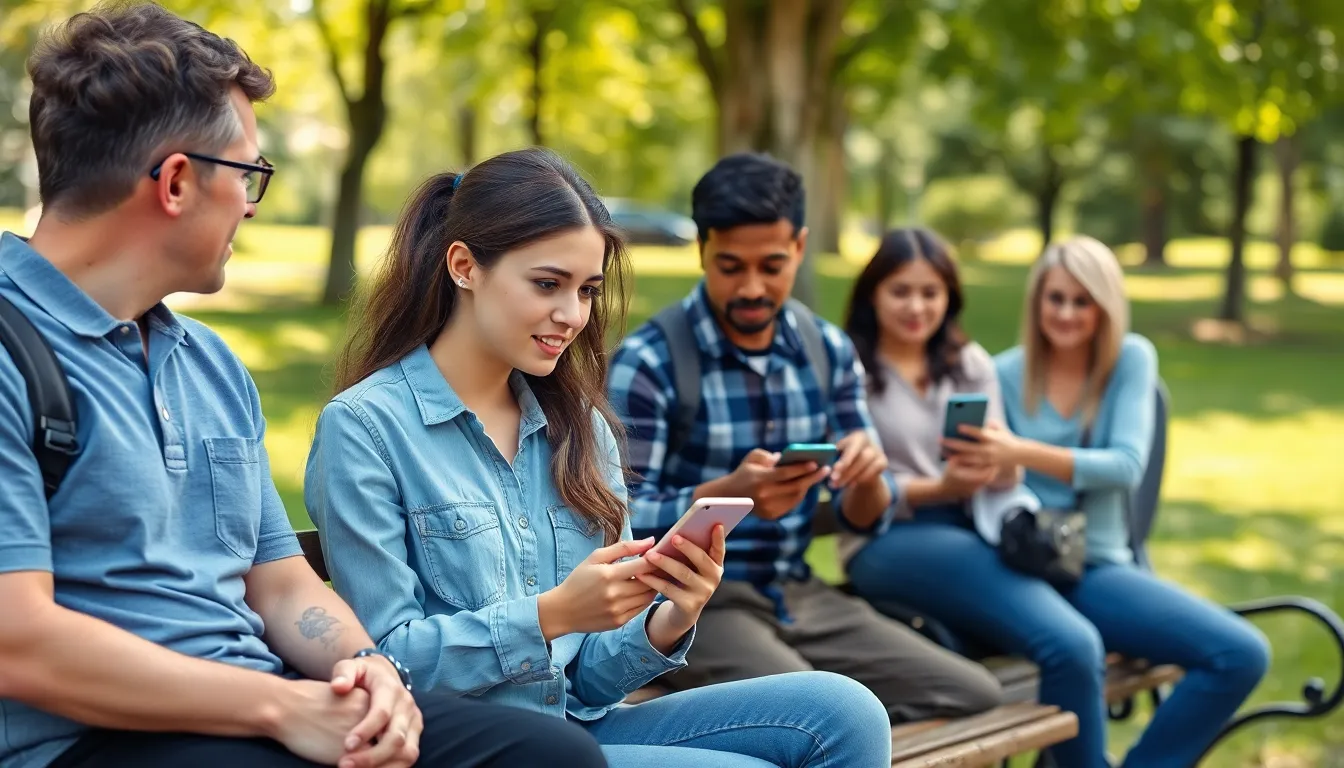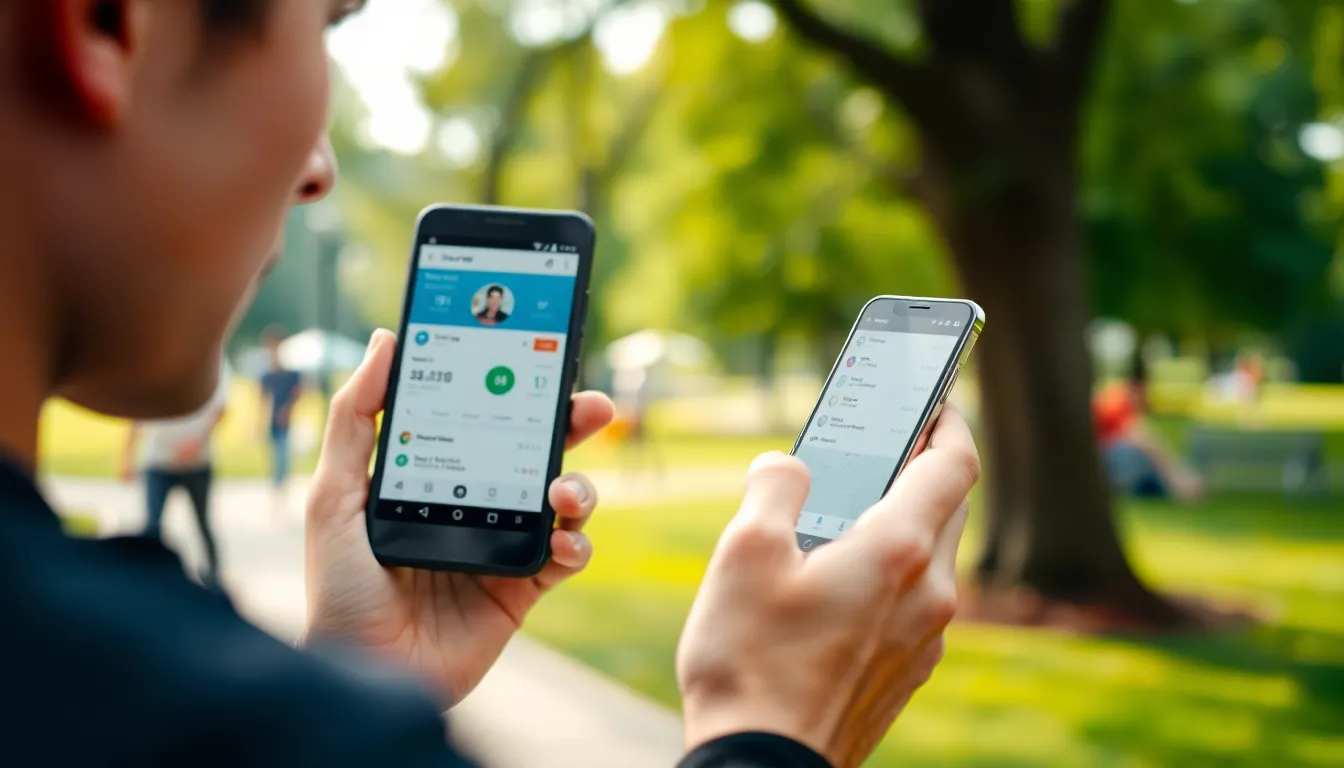In a world where smartphones reign supreme, the battle between iPhone and Android users is as fierce as ever. But what happens when an Android user needs to track an iPhone? It might sound like trying to find a needle in a haystack, but fear not—there are ways to bridge this tech divide.
Table of Contents
ToggleUnderstanding Cross-Platform Tracking
Tracking an iPhone with an Android device presents unique challenges due to the distinct operating systems. Apple’s ecosystem emphasizes privacy and security, making cross-platform tracking difficult. Users seeking to locate an iPhone from an Android phone must explore specific configurations and tools.
Third-party applications provide one solution. Some apps like Google’s Find My Device or location-sharing services enable users to share their locations with specific individuals. The iPhone user must initiate location sharing through iCloud, granting the Android user access to their whereabouts.
Another method involves using web-based tracking services. These services often require the iPhone user to enable certain settings. This ensures compatibility and allows location information to become accessible remotely. Services like Family Locator or Glympse offer this functionality, allowing users to see mutual locations.
Privacy concerns often arise when attempting cross-platform tracking. It’s critical for both parties to agree on tracking permissions. Transparent communication fosters trust and ensures that both users remain comfortable with the tracking process.
GPS technology plays a vital role in determining a device’s location. Android users can take advantage of real-time GPS tracking features available on both platforms. As location data updates in real-time, accuracy improves for tracking efforts.
Understanding the limitations and capabilities of both devices encourages informed decisions. By utilizing apps, location-sharing options, and web-based services, Android users can successfully track iPhones. Ultimately, users can navigate the complexities of cross-platform tracking with the right tools and clear communication.
Tracking Options for iPhone Users

Android users can indeed track an iPhone using various methods. Understanding these options helps them navigate the limitations of different operating systems.
Built-in Tracking Features
Apple offers a built-in feature called Find My iPhone, which allows users to locate their device through iCloud. Enabling this feature is essential; the iPhone user must activate location sharing. Once activated, the iPhone broadcasts its location, making tracking possible via a web browser or compatible app. GPS technology enhances accuracy, providing real-time updates as the device moves. Both parties should agree on permissions to foster trust and privacy while utilizing these features.
Third-Party Apps
Several third-party applications facilitate tracking an iPhone from an Android device. Google Maps offers a location-sharing feature, accessible once the iPhone user shares their location. Family Locator and Glympse serve as additional options, allowing users to send real-time location data. These apps require specific settings on the iPhone to function correctly. Users should ensure that both devices are compatible and that the necessary permissions are granted. Tracking can be seamless when both parties communicate openly and agree on the methods used.
Limitations of Tracking iPhone with Android
Tracking an iPhone using an Android device poses several limitations. Users face multiple challenges due to privacy regulations and compatibility issues.
Privacy Concerns
Privacy remains a significant concern when tracking an iPhone. Apple’s robust security protocols protect user data, often restricting unauthorized access. Both parties must agree on tracking permissions to ensure trust. Without mutual consent, tracking iPhone’s location becomes virtually impossible. Moreover, specific features are managed through iCloud, necessitating the iPhone user to enable tracking options. Prioritizing privacy enhances the relationship dynamics, making cooperation essential for effective tracking.
Compatibility Issues
Compatibility issues also complicate tracking an iPhone with an Android phone. Distinct operating systems mean that some apps may not work seamlessly across platforms. Third-party applications often require specific settings activated on the iPhone for successful tracking to occur. Incompatible tools can create gaps in the tracking process. As a result, users must select compatible services like Google Maps or web-based options that meet both systems’ requirements. These complexities hinder straightforward tracking, indicating a clear need for strategy and knowledge.
Step-by-Step Guide to Track an iPhone with Android
Tracking an iPhone using an Android device involves several steps. This guide outlines the most effective methods for accomplishing this task.
Using Find My iPhone
Activate Find My iPhone on the iPhone for tracking to function. This built-in Apple feature allows sharing the device’s location via iCloud. To use it, the iPhone user must log into their iCloud account, then enable location sharing settings. Once enabled, anyone granted access can see the device’s location in real-time. Android users should open a web browser, navigate to iCloud.com, and sign in. After logging in, they can access the Find iPhone feature to locate the device easily. It’s essential for the iPhone user to keep their device powered on for accurate tracking.
Using Third-Party Tracking Apps
Third-party tracking apps provide alternative solutions for tracking an iPhone from an Android device. Both the iPhone user and Android user must download the same app, such as Google Maps, Life360, or Family Locator. Location-sharing settings should be configured within the app to allow tracking. Each user needs to invite the other to share their location through the app’s interface. Notifications can keep both users informed about location updates. Privacy settings must also be considered to ensure data protection and consent from both parties. Once set up, these applications facilitate seamless tracking regardless of the different operating systems.
Tracking an iPhone with an Android device presents unique challenges due to differing operating systems and privacy protocols. However with the right tools and permissions in place it’s possible to locate an iPhone effectively. Users should focus on enabling location-sharing features and using compatible third-party applications to facilitate tracking.
Clear communication between both parties is essential to navigate privacy concerns and ensure a smooth tracking experience. By understanding the necessary steps and maintaining trust, users can successfully bridge the gap between iPhone and Android devices for effective tracking solutions.




